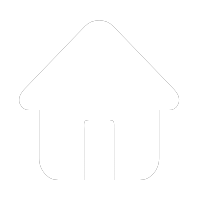Blog
Off-Grid Pods: Powering the Future of Container Homes in Remote Australia

Table of Contents
-
Introduction
-
What Are Off-Grid Pods?
-
Why Off-Grid Systems Are in Demand
-
Core Features of Containable Luxury’s Off-Grid Pods
-
Benefits of Off-Grid Pods in the Housing Market
-
Key Applications and Use Cases
-
The Business and Market Potential
-
Challenges and Limitations
-
Future Trends for Off-Grid Living in Australia
-
Conclusion
-
FAQ
-
Short Marketing Highlights
1. Introduction
Australia’s housing market is undergoing rapid transformation. Modular and container-based homes are no longer a niche trend — they are becoming a mainstream housing solution for both urban and rural areas. However, one persistent challenge remains: utility access in remote locations.
Enter Containable Luxury’s Off-Grid Pods, a cutting-edge innovation designed to power container homes and modular units independently. By integrating solar panels, water storage, and IoT-driven systems, Off-Grid Pods are making it possible to live comfortably anywhere — from the outback to coastal retreats.
2. What Are Off-Grid Pods?
Off-Grid Pods are self-contained mobile utility units engineered to support modern housing without reliance on grid connections. Whether attached to a container home, modular cabin, or used as a standalone power and water hub, these pods combine:
-
Energy Independence: Solar panels with battery storage.
-
Water Management: Rainwater collection, purification, and UV sterilization.
-
Smart Control: IoT systems for monitoring usage and efficiency.
-
Plug-and-Play Integration: Ready to deploy in hours with minimal setup.
This seamless integration creates a portable infrastructure that fits perfectly with Australia’s growing off-grid lifestyle movement.
3. Why Off-Grid Systems Are in Demand
Housing Pressure Meets Remote Opportunities
Australia’s vast landmass and growing population are driving expansion into regional and rural zones, where municipal water, sewage, and electricity are often unavailable or costly to connect.
Climate and Sustainability Pressures
With increasing climate events and a focus on carbon neutrality, more homeowners and developers are turning to renewable, decentralized systems like solar-powered Off-Grid Pods.
Tourism and Temporary Housing
Eco-tourism, remote work retreats, and disaster relief initiatives are fueling demand for portable infrastructure that supports temporary or mobile housing units.
4. Core Features of Containable Luxury’s Off-Grid Pods
Containable Luxury’s Off-Grid Pods are engineered with precision to meet a variety of needs.
1. Integrated Power Systems
-
High-efficiency solar panels for consistent energy supply.
-
Battery storage systems to provide power day and night.
-
Optional backup generators for extended autonomy.
2. Water Storage and Purification
-
Rainwater collection tanks with integrated filtration systems.
-
UV water treatment for safe, drinkable water.
-
Optional tank size upgrades for higher usage demand.
3. IoT and Smart Monitoring
-
Real-time monitoring of power and water levels.
-
Remote management through connected mobile apps.
-
Data analytics for efficient consumption and predictive maintenance.
4. Rapid Deployment
-
Fully modular and compact design for quick installation.
-
Compatible with any existing modular or container housing system.
-
Requires only basic hookups by certified professionals.
5. Benefits of Off-Grid Pods in the Housing Market
Energy and Water Independence
Off-Grid Pods remove reliance on local utilities, reducing setup costs and enabling true independence.
Sustainability
With renewable energy and smart water systems, the pods significantly lower carbon footprints and promote resource conservation.
Speed and Flexibility
Pods can be installed in a matter of hours, making them ideal for rapid deployments in emergency housing or time-sensitive projects.
Cost Savings
Avoiding the expense of connecting to city grids can save tens of thousands of dollars, especially in remote areas.
6. Key Applications and Use Cases
Off-Grid Pods have wide-ranging applications across industries and lifestyles:
-
Remote Residences
Perfect for families or individuals seeking sustainable living far from city centers. -
Temporary and Emergency Housing
Deployed quickly in disaster zones or temporary accommodation setups. -
Agricultural and Rural Properties
Support for farmhouses, workstations, and rural developments without existing utilities. -
Eco-Tourism and Hospitality
Off-grid glamping, coastal retreats, and wilderness lodges. -
Mobile Workstations
Support for mining camps, research stations, and event setups in remote locations.
7. The Business and Market Potential
Off-Grid Pods are opening new revenue streams for both developers and housing solution providers:
-
Bundled Housing Packages: Developers can integrate pods with container homes to create turnkey solutions.
-
Rental and Leasing Models: High demand in temporary or mobile setups creates opportunities for short-term rentals.
-
Value-Added Upgrades: Offering customized configurations generates premium upsell potential.
The off-grid solutions market in Australia is projected to grow at double-digit rates over the next five years, driven by sustainability trends and rising energy costs.
8. Challenges and Limitations
While the Off-Grid Pods offer impressive benefits, there are hurdles to address:
-
Upfront Investment: Initial costs may be prohibitive for some buyers.
-
Technical Maintenance: Requires periodic upkeep and battery replacements.
-
Awareness and Education: Many potential users remain unaware of the technology’s full potential.
9. Future Trends for Off-Grid Living in Australia
Looking ahead, several trends will shape the growth of Off-Grid Pods:
-
Integration with Smart Grids: Seamless hybrid systems combining off-grid autonomy with occasional grid support.
-
Advanced Energy Storage: Longer-lasting batteries and hydrogen power options.
-
Community-Level Off-Grid Pods: Shared utility pods serving micro-villages or eco-communities.
-
Regulatory Support: Incentives and rebates for renewable and off-grid systems.
10. Conclusion
Containable Luxury’s Off-Grid Pods are redefining how Australians think about housing infrastructure. By delivering energy, water, and smart technology in a portable unit, they enable true freedom and flexibility for container homes and modular housing projects.
Whether for remote properties, emergency deployments, or sustainable developments, Off-Grid Pods provide a future-ready solution to the challenges of modern living.
11. FAQ
Q1: How long does it take to install an Off-Grid Pod?
Typically, within a few hours, including basic hookups.
Q2: Can these pods power a full-size container home?
Yes. The system is scalable to meet different energy demands.
Q3: Are Off-Grid Pods customizable?
Absolutely. Options include backup generators, larger water tanks, and upgraded solar capacities.
Q4: What maintenance do they require?
Regular cleaning of panels and filters, and battery replacement every 7–10 years.
Q5: Where can Off-Grid Pods be deployed?
Anywhere — from remote farms and beaches to urban rooftops.

















